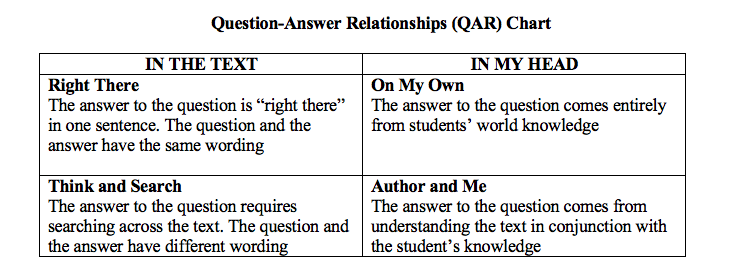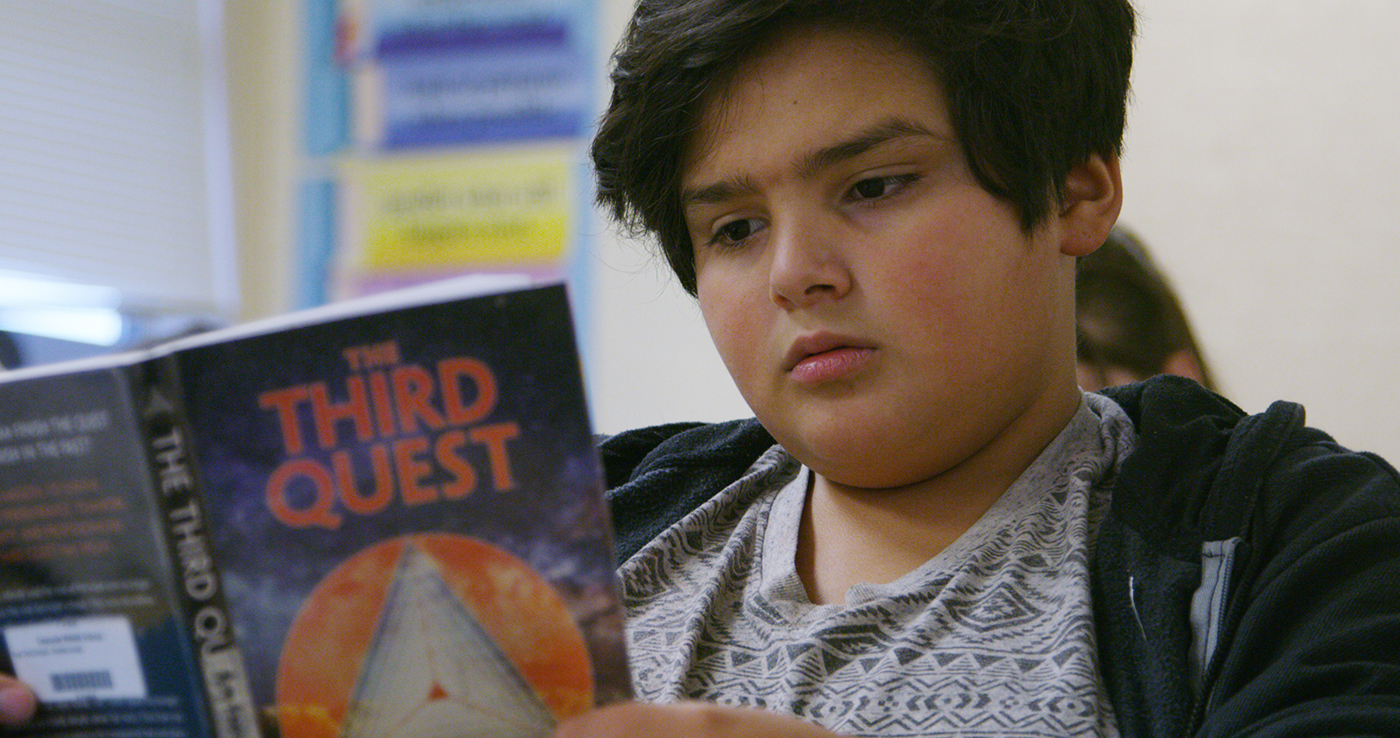by Susan Van Zant and Nancy Volpe, Educational Services Specialists, CORE
Nowadays the ability to answer text-dependent questions is essential to do well on standardized tests of all types. Students often have a difficult time using information from the text to answer comprehension questions, particularly inferential questions which require them to cross reference text and dig out answers that are not plainly stated. Question-Answer Relationships (QAR) is an instructional technique designed to teach students to use metacognitive thinking to determine what they need to do in order to answer questions commonly found on high-stakes, summative assessments.
Interested in more great professional insights on QAR? Check out this CORE video: Lesson Model Video: QAR (Question-Answer Relationships)
QAR is a research-based method designed to help students learn to first decipher what the question is asking and then to determine how to locate the specific information needed to answer that question. QAR helps students understand that answers come from one of two main sources of information: In the Text and In My Head. These two sources are the headings in the chart below that further delineates the relationships between questions and answers.
The relatively small amount of time invested in teaching students about the relationships among questions and how and where to find the answers to those questions has a tremendous pay-off for students in any grade level, especially older struggling students.
How does the QAR process work?

“Right There” questions require the student to go back to the text and find the correct information to answer the question. These are sometimes called literal questions because the correct answer can be found in one place in the text.
“Right There” questions sometimes include the words, “According to the text…” “How many…” “Who is…” “Where is…” “What is…”
Some example questions are:
- Who was the president in 1884?
- How many chemical elements can we find in salt?
- What are the beginning and ending dates of World War II?
- Where did the Battle of the Bulge take place?
“Think and Search” questions usually require the student to think about how ideas or information in the text are related. Students will need to look back at the text, find the information that the question refers to, and then think about how the information or ideas fit together. The information may be in multiple places in the text.
“Think and Search” questions sometimes include the words, “The main idea of the passage is…” “What caused…” “Compare/contrast…”
Some example questions are:
- Explain the difference between a solid and a gas.
- Give reasons why the civil war began.
- Find evidence in the article for causes of pollution.
- Give at least three reasons why the south lost the civil war.
“Author and Me” questions require students to use ideas and information that are not stated directly in the text to answer the question. These questions require students to think about what they have read and formulate their own ideas or opinions.
“Author and Me” questions sometimes include the words, “The author implies…” “The passage suggests…” “The speaker’s attitude..,”
Some example questions are:
- How might the Watson family be similar to and different from your family?
- Do you think Jacob’s dream will come true? Why or why not?
- Discuss a time when you use tools and compare that to early man’s use of tools.
- How is living in Alaska different from living where you live?
“On Your Own” questions can be answered using your background knowledge on a topic. This type of question is the most infrequent question on tests of reading comprehension because it does not require you to refer to the text but is often given as a writing prompt. “On Your Own” questions sometimes include the words, “In your opinion…” Based on your experience…” “Think about someone or something you know…”
Some example questions are:
- What are some different uses for a wooden frame?
- What are some ways that brothers and sisters help each other?
- What would you do if you found a kayak?
- What do you know about Arctic lands?
How do I integrate the QAR strategy into my instruction?
After instruction and modeling of the four question-answer relationships, give students a short passage from the current informational text they are reading and have them answer four questions, one from each of the categories. Groups should identify and label each of the question-answer relationships as they discuss the answers to each question. The entire class can then go over the answers and how they labeled them. Students should then discuss why they should use this strategy and in what circumstances would it be most helpful. This guided practice and discussion should happen regularly so students internalize the process.
If you are interested in learning more about how to teach QAR a sample lesson is included in the CORE Teaching Reading Sourcebook pages 702-710 and a video of a QAR lesson being presented in a small group setting is available in our Resources.






